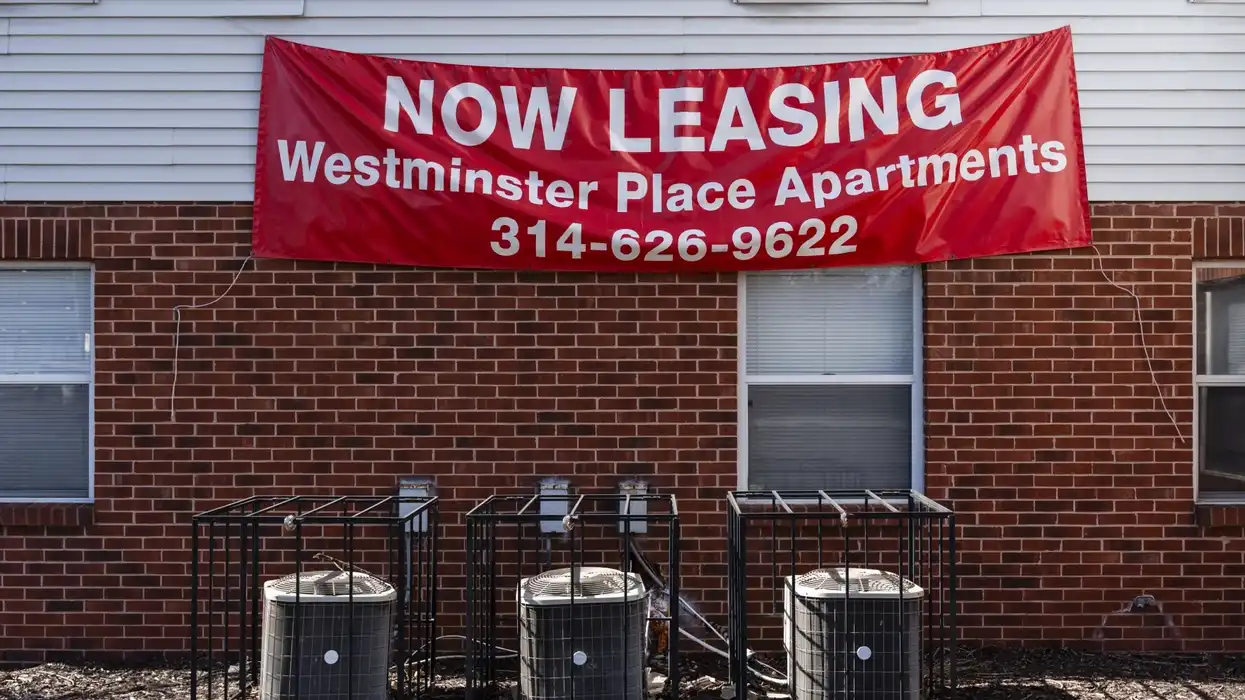In several states, a renter must earn $20 or more per hour to afford apartments being leased at Fair Market Value. Nearly half of Americans don’t make enough money to afford a one-bedroom rental.
Personal stories about struggling to make ends meet appear throughout the report, “Out of Reach: The High Cost of Housing.”
Vee, from Missouri, said her small wage increases don’t make a dent in rising rent costs.
“Everything is going up, but the paycheck,” a woman named Detrese from Maryland told the National Low Income Housing Coalition, which authored the report.
The report focuses on the housing wage, defined as the full-time hourly wage needed for workers to afford “a decent rental home that doesn’t occupy more than 30% of their wage.”
On the national level, the data show that a renter needs to earn about $28 an hour to afford a modest one-bedroom rental without spending more than 30% of their income on housing. Half of working Americans earn less than that, according to the report.
Published on Thursday, the report begins with an open letter from Rep. Emanuel Cleaver II of Missouri that warns about the ongoing affordable housing and homelessness crisis in the U.S.
“I know these challenges firsthand. As a child, my family and I lived in public housing. We relied on it to put a roof over our heads, and to make sure there was enough money to put food on the table,” Cleaver writes.
In at least four Midwestern states, minimum wage is not enough to afford a two-bedroom rental at Fair Market Value.
Renters in Nebraska, Iowa, Kansas, and Missouri need to make at least $20 an hour to afford a two-bedroom rental. Minimum wage earners would need to work several full-time jobs to afford it.
Costs are even higher in Illinois, where it takes earnings of almost $30 an hour to afford a dwelling of the exact same size.
“People have lower incomes in those places, so the housing might be more affordable, you know, nominally, but not necessarily, relative to people's incomes,” said Dan Emmanuel, the coalition's director of research.
Nowhere to go
According to the NILHC report, only one out of four prospective renters eligible for housing assistance is able to receive that aid, and budget cuts to federal programs proposed by Congress will drastically impact those who need it.
Under the 2026 Transportation, Housing, and Urban Development measure, almost a billion dollars could be cut from HUD, an amount which the NILHC acknowledges is not as high as originally proposed.
In remarks at a July Appropriations Committee session, Rep. Tom Cole of Oklahoma, who chairs the committee, said:
"The bill empowers local housing and community development decision-making through Community Development Block Grants and NeighborWorks—capacity-building activities that leverage private housing investment dollars.”
Emmanuel said many people will lose their housing and could become homeless as a result of the proposed cuts.
“(HUD) won't be able to serve the same amount of people as in 2025,” Emmanuel said.
Tina Murray, vice president of housing at Together Omaha, a food and housing advocacy organization, is concerned about the end of housing programs. She said there is already a big shift in housing affordability in Omaha due to the end of the pandemic-era federal funds and predicts a gradual rise in evictions after the federal funding is no longer available.
“What we're seeing now are a lot of individuals that I believe will not be able to afford where they're living, or be able to be re-house,” Murray said.
Omaha is one of the most expensive areas for renters in the state of Nebraska. The housing wage in the state’s largest city is about $24, while the state housing wage is $21.57. The average Nebraskan renter earns $17.71 an hour, only about four dollars above the state minimum wage.
According to the report, Kendall County, in the Chicago metropolitan region, is one of the most expensive areas for renters in Illinois. The housing wage there is $36.27, higher than the state’s housing wage of $29.81. The average Illinois renter makes $23.01 an hour, about seven dollars above the minimum wage.
Vikki from Illinois shares her story in the report, describing feeling trapped, as her only housing options to relocate with her son are in "unacceptable conditions."
Cleaver said people of color are disproportionately impacted by the rising cost of rent, lack of affordable housing, and low wages.
In comparison to white people, people of color face higher rates of housing, employment,t and income discrimination. Latina women face the biggest wage gap, earning nearly 11 dollars per hour less than white men. The unemployment rate for American Indians and Alaska Natives was 6.6%, roughly double the rate for white people.
“There is a long, long history of housing discrimination. Either through red line exclusionary zoning or predatory lending. And some of those practices are even persistent in the present," said Emmanuel.
Causes, solutions
In his introductory letter to the report, Cleaver sums up many factors contributing to what the NILHC calls an “affordability crisis” in housing.
“While the stories and circumstances are unique, the root causes of housing instability are not: there are not enough decent, affordable, and accessible homes in communities, and wages have not kept pace with the ever-increasing cost of rent,” Cleaver writes.
The NILHC states that another factor contributing to the shortage of affordable housing is the practice of upward filtering, where landlords and developers renovate old buildings and rent the units at higher prices.
The authors of “Out of Reach” say solutions to the affordability crisis are available.
The report urges Congress to protect housing programs and expand the existing assistance. One of its suggestions is to continue the Emergency Housing Voucher program, created through the American Rescue Plan Act of 2021.
“Congress must not only protect existing housing programs but significantly strengthen them through sustained investment, expanded rental assistance, and policies that eliminate barriers to housing access,” the report says.
The NILHC points to the Family Stability and Opportunity Vouchers Act as a step in the right direction. The bipartisan measure would provide 250,000 housing vouchers to families with young children to increase housing stability and offer them more choice in where they live.
Jessica Meza is a Journalism & Advertising and Public Relations student at the University of Nebraska-Lincoln. Jessica is the Hortencia Zavala Foundation 2025 summer intern working with NPR’s Midwest Newsroom, the Latino News Network (LNN), and the Fulcrum, as part of our NextGen initiatives.
The Midwest Newsroom is an investigative and enterprise journalism collaboration that includes Iowa Public Radio, KCUR, Nebraska Public Media, St. Louis Public Radio, and NPR.



















